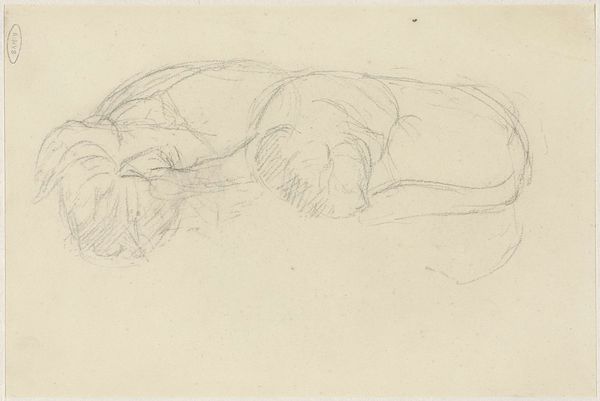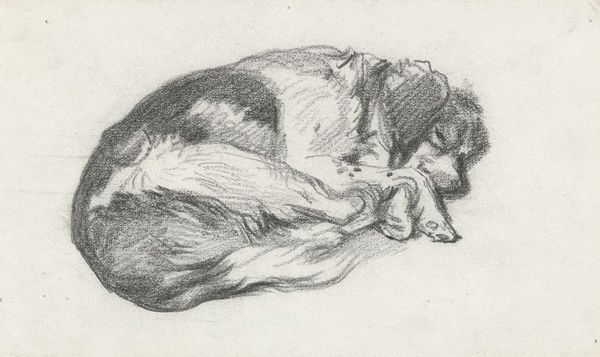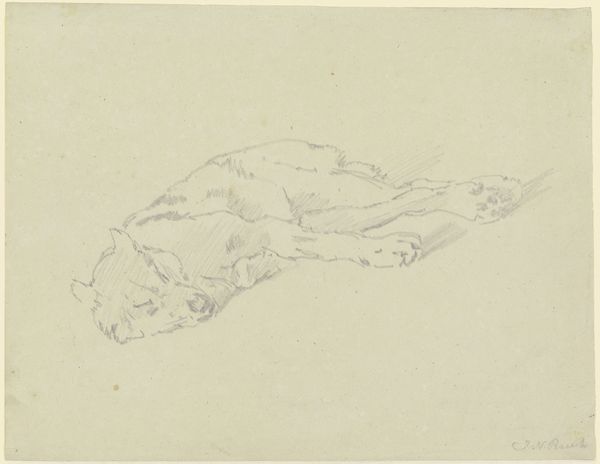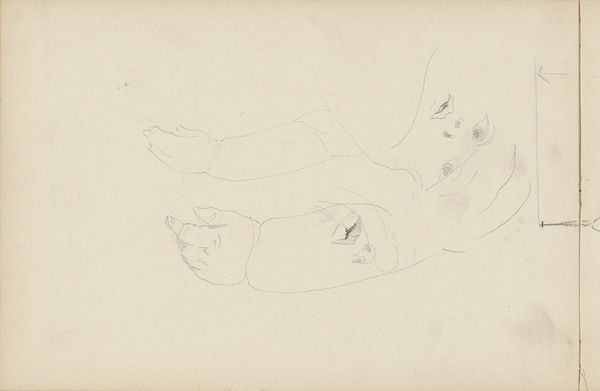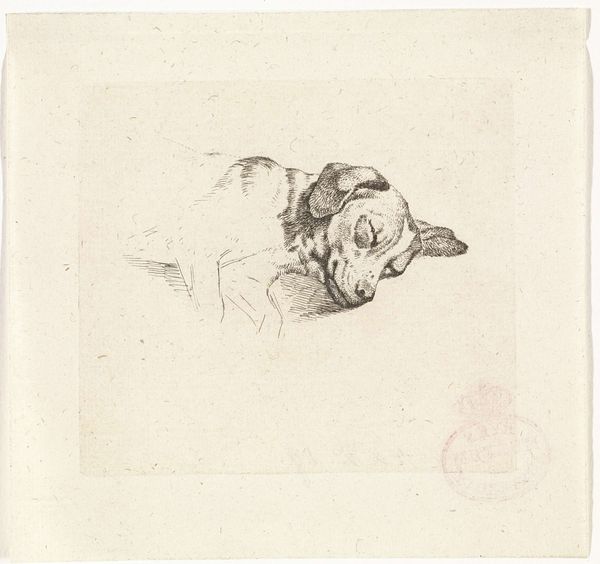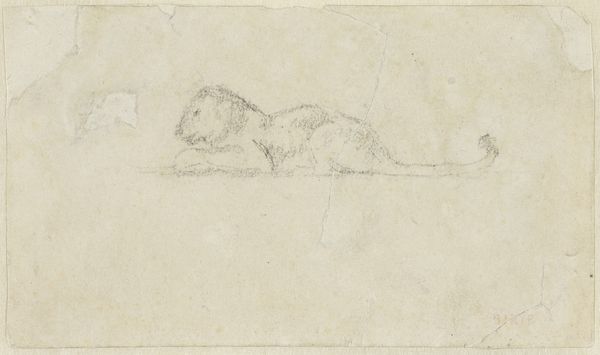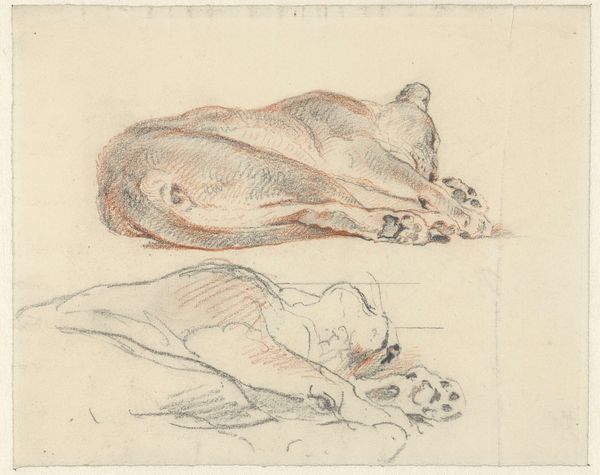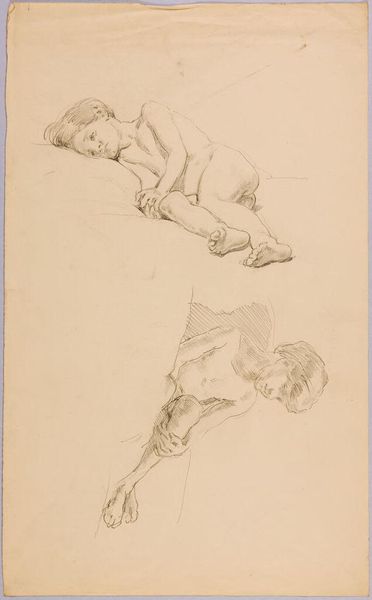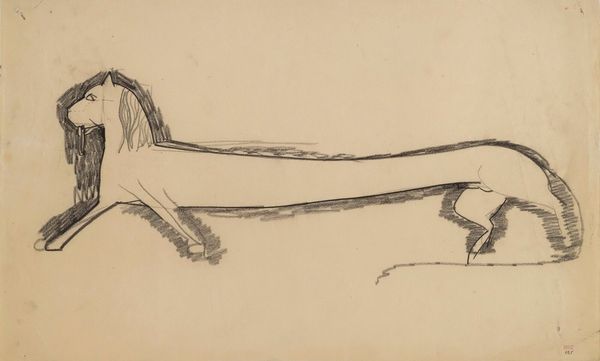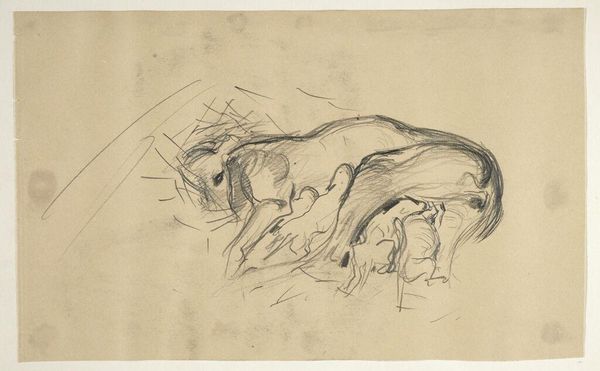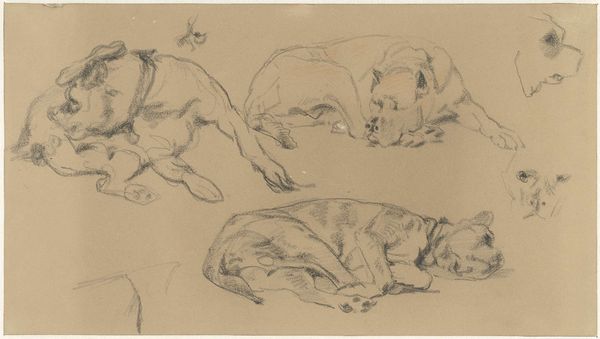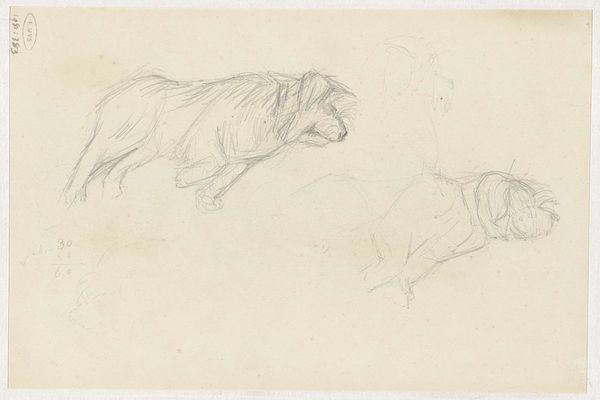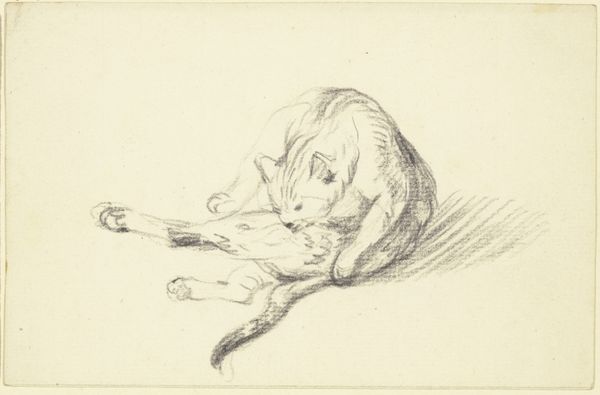
drawing, paper, pencil
#
portrait
#
drawing
#
animal
#
pencil sketch
#
dog
#
paper
#
pencil
#
realism
Dimensions: height 182 mm, width 264 mm
Copyright: Rijks Museum: Open Domain
Curator: This is Otto Eerelman’s "Sketch of Three Sleeping Dogs," a pencil drawing on paper, thought to have been created sometime between 1849 and 1926. Editor: Oh, it's charming! They look so utterly peaceful, slumped together like furry, four-legged pancakes. It's quite tender, you know? The soft shading gives them this gentle vulnerability. I feel an immediate fondness, almost maternal. Curator: Eerelman was known for his animal paintings, especially dogs and horses. What’s interesting here is that it's a sketch, not a finished piece. The visible pencil work reveals his process. Consider how rapidly he had to work. He needed to record what he was seeing as fast as he could. Editor: You're right. It's like catching a fleeting moment of canine bliss, a brief respite in their probably quite boisterous lives. You can almost feel the weight of their heads, the soft rise and fall of their breathing. What I find curious is that one dog is only half formed. Did he change his mind about the composition? Curator: It speaks to the economic realities of art creation in Eerelman's time. Sketches weren’t necessarily intended as finished pieces. They served a practical purpose for larger works or for study. Paper and time weren't free, so it may simply be a detail left incomplete. The focus remained on capturing the essence of his subject. Editor: And it so brilliantly captures that essence! The simplicity is powerful. There's nothing fussy or pretentious about it. It's just…dogs being dogs, reveling in the simple pleasure of sleep. Maybe it wasn't supposed to be "finished." I rather adore it precisely as it is. It’s about intimacy and the mundane miracles that go unnoticed. Curator: Absolutely. Its existence sheds light on artistic practices that valued resourcefulness. It also invites us to reconsider our relationship with these commonplace animals as working subjects. It speaks volumes about Eerelman's material concerns as he developed as an artist. Editor: I'll certainly think about dogs differently now! Curator: And hopefully, we’ve both expanded our thinking regarding art-making in its diverse forms.
Comments
No comments
Be the first to comment and join the conversation on the ultimate creative platform.
